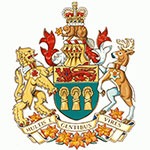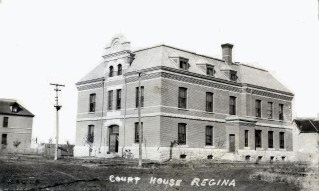About the Court
Court of Appeal | SaskatchewanCourts of Saskatchewan
About the Court
Court of Appeal
The Court of Appeal for Saskatchewan consists of the Chief Justice and 7 puisne judges appointed by the federal government. The Court is located in Regina, however, sittings are regularly scheduled in Saskatoon.
The Court is an appeal court and does not conduct trials or re-hearings. It reviews decisions made by the Court of King’s Bench, Provincial Court and certain tribunals to determine if the judge, tribunal or adjudicator made material errors.
In general terms, the Court of Appeal may:
- dismiss the appeal;
- allow the appeal and order a new trial or hearing; or
- allow the appeal and change the order of the lower court or tribunal.
The Court hears appeals in both civil and criminal matters. Criminal appeals include sentence appeals, conviction appeals, appeals from acquittals and youth matters.
Civil appeals include commercial, administrative and family law matters. In the majority of cases, the Court of Appeal is a person’s last opportunity to appeal.
After the Court decides an appeal, in some instances a party may seek leave to appeal to the Supreme Court of Canada. However, on average, the Supreme Court grants leave to appeal in fewer than five Saskatchewan cases per year.

History of the Court
Court of Appeal | SaskatchewanThe Court House
The original provincial court house was built in 1894. It stood on the northwest corner of Hamilton Street and Victoria Avenue. It was demolished in 1965 and the Avord Towers building was constructed.
The present court house was built in 1961 and was the last major commission of renowned Regina architect, Francis H. Portnall.
I. Early Beginnings: Administration of Justice by the Mounted Police
Then, in 1873, Parliament enacted legislation that conferred limited judicial powers on certain officers of the police force. Every Commissioner and every Superintendent of Police was deemed to be an “ex-officio” Justice of the Peace.
Parliament also made provision for the appointment of one or more “fit and proper person or persons” to act as stipendiary magistrates, who did not have tenure and could be dismissed “at pleasure” by the federal cabinet.
The magistrates performed the same functions as a justice of the peace, yet had the power of two justices of the peace, which gave them the power to try certain summary offences. They had the power to sentence convicted individuals for “any period less than two years” in jail or place of confinement.
Two stipendiary magistrates had the power and authority to sit together as a Court to hear and determine cases for which the maximum possible punishment did not exceed seven years imprisonment.
If an individual was charged with an offence punishable by death, then justices of the peace and stipendiary magistrates had the power to send the offender to Manitoba to be jailed and tried. By 1883, there were six stipendiary magistrates.
II. The Development of the Judiciary
Current or former judges of a superior court in any province in Canada, stipendiary magistrates or lawyers who had practiced in Canada for at least 10 years could be appointed to the Supreme Court of the North-West Territories. The five members of the first Court were Justices Thomas H. McGuire, Hugh Richardson, James F. MacLeod, Charles Rouleau and Edward Wetmore. Both Hugh Richardson and James F. MacLeod had previously been stipendiary magistrates.
The Supreme Court of the North-West Territories was a court of record and possessed original and appellate jurisdiction over both criminal and civil matters. Unlike the stipendiary magistrates, the Justices of the Supreme Court of the North-West Territories had tenure. They were appointed on “good behaviour” and were removable only for cause by the Governor General.
On September 1, 1905, The Saskatchewan Act came into force and created the province of Saskatchewan. However, the Supreme Court of the North-West Territories continued in existence until it was replaced by the Supreme Court of Saskatchewan in 1907.
III. The Supreme Court
Notably, Justices Prendergast and Lamont were among the first judges in the province to have law degrees. It is also interesting to note that judges of the Court were ex-officio justices of the peace and coroners for the province. In 1913, the Court was expanded to include the Chief Justice and five puisne judges.
The Court exercised both trial and appellate functions over criminal and civil matters, as there was no distinct Court of Appeal at the time. Justices of the Court could preside over trials individually, as well as hear appeals from a decision of one of their colleagues in a quorum of three.
IV. The Court of Appeal
The Court of Appeal was to consist of the Chief Justice and three puisne judges. Sir Frederick Haultain, who had been the Chief Justice of the Supreme Court of Saskatchewan, continued his role as Chief Justice of the Court of Appeal and presided over puisne judges Henry Newlands, John Henry Lamont and Edward Lindsay Elwood, all of whom had been judges of the Supreme Court of Saskatchewan. In 1922, an amendment to The Court of Appeal Act increased the number of puisne judges to four.

